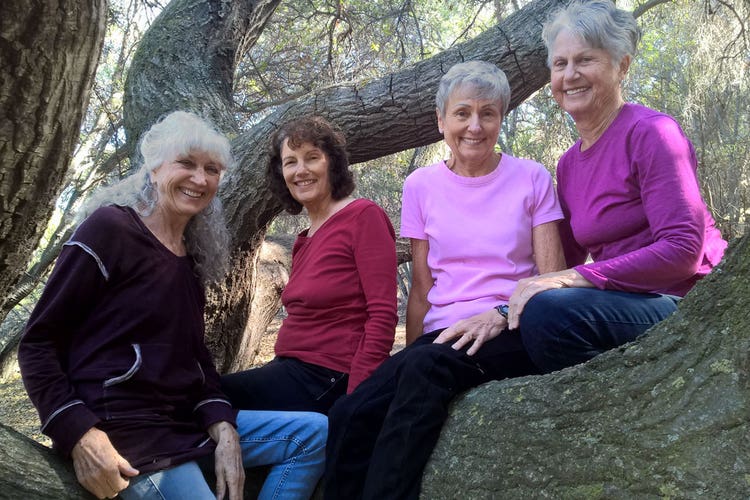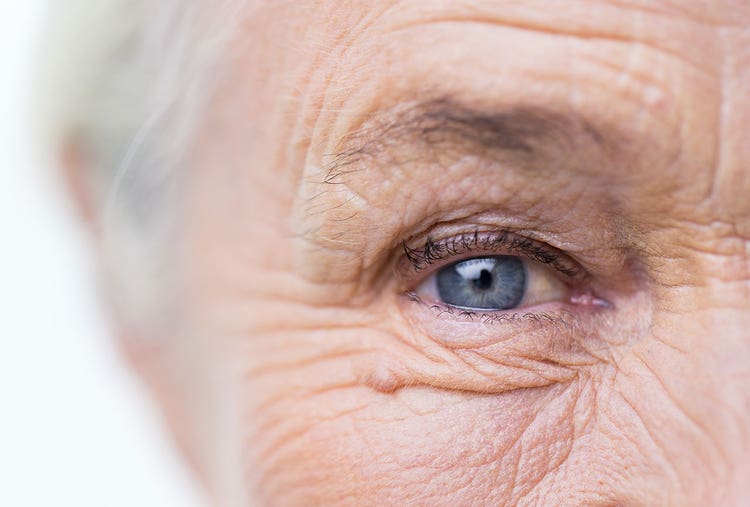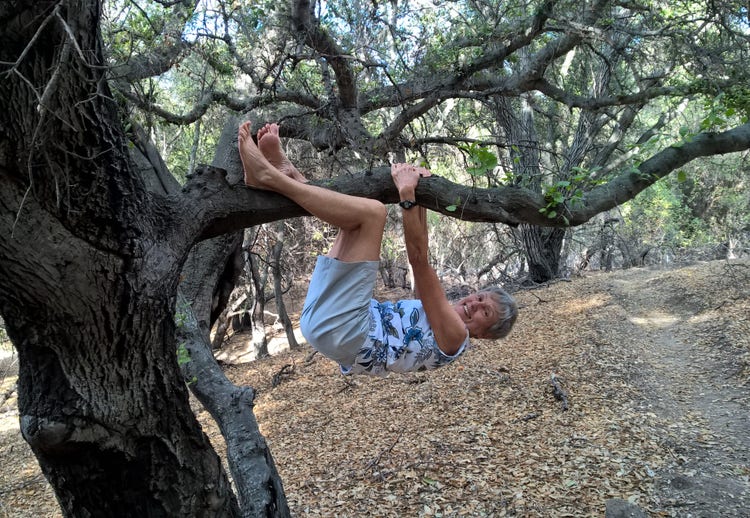Dynamic Aging With Katy Bowman

Moving your body and honoring the struggle changes everything.
As another year closes, we are quickly reminded of the passing of time. But what if aging were a celebrated present instead of a dreaded future? What if your anticipated mental decline, pain and lack of mobility isn’t because of your age but because of your habits?
Katy Bowman, MS, has earned an international reputation for educating the general population on alignment and load science and, as a result, has helped thousands to reduce pain, increase bone density, improve metabolic health and solve their pelvic floor mysteries. She is known for her radical, counterculture health directives, which are based in the hard science that she has made her life’s work.

The biomechanist and movement teacher took a break from a family adventure in New Zealand to share advice from her latest book “Dynamic Aging” (Propriometrics Press, 2017) with 24Life. Changing how you move can change how you feel. No matter your age, we can all learn how to care for our bodies better—we can all learn to move our feet, ankles, knees, hips, back, shoulders, pelvic floor, brain and all the rest in a whole-body, whole-life way.
24Life: We are overdue for a renaissance or revolution in movement in the world. How did we get so far away from our birthright?
Katy Bowman: Probably because of human ingenuity and our natural tendency to want to conserve energy. All our tools of convenience, from hammers and wagons and scythes all the way to smartphones, actually stop us from moving as much as we did when we lived in the wild with fewer tools. Although we don’t need to do these movements to get what we need, our physiology seems to still require them to function properly.
24Life: We have such a fear and disrespect of aging in our culture, why do you think that is?
KB: I’d suggest it’s a complex issue—the result of, again, living in a particular lifestyle. Capitalism, for example, requires and thus values productivity but then defines productivity quite narrowly. If you’re only valuable to a society when you’re at working age, then before and after, you’re not as useful as there are no jobs for you. We also tend to value a narrow range of appearances—we’re all trying to move our faces, hair and bodies toward that. To look differently is to be perceived as less valued. Maybe because we live in separate nuclear families and don’t live or spend time with our elders enough; maybe because we lack enough rituals around death to feel comfortable with our own aging and mortality.
24Life: What motivated you to write the book “Dynamic Aging”?
KB: I’ve been touting the ideas that so much of what we perceive as issues of aging are just compounded issues of sedentarism, but it’s easy to dismiss a 40-year-old mouthpiece—and I get it! What do I know about moving in my 60s and 70s? So I asked my four co-writers, who have used the program I created for 10 years, to tell their stories of gained mobility, strength and confidence. You want to hear stories of moving in your 60s, 70s and 80s from those who’ve done it. What could be more appropriate and empowering?
24Life: How does this book differ from “Alignment Matters” and “Movement Matters”—is it a continuum?
KB: You could definitely call it a continuum. This book combines a lot of both books—the precise movements of “Alignment Matters” and the lifestyle habits, community and broader context of “Movement Matters.”
24Life: What is the key message you hoped to share in the book?
KB: That, no matter your age, there are ways you could be moving that can make you feel better, not only to add years to your life but life to your years.

24Life: What inspired or surprised you the most as you wrote the book?
KB: The continued dynamism and achievements of my co-authors.
24Life: What did you learn from the women and their stories?
KB: That purposeful movement is key. Movement needs context beyond exercise. Whether you’re moving in a group to add a bit of community to your day or heading out into nature to enrich your physical movements with all the benefits that come from natural light, green and blue spaces—the more you can tie movement to other things you’re interested in, the more likely it will get done in abundance!
24Life: When we think about aging, what is the relationship between our mindset and movement?
KB: There have been studies that show that those who are worried about falling tend to have more falls—not because of any physical reason, just because their own fear makes them more likely to fall. Extrapolating from that, confidence in our own strength, balance and mobility can deeply affect our actual movements.
24Life: How is movement different from exercise?
KB: Exercise is a type of movement, but movement is so much more than exercise. Non-exercise movement covers everything from breathing to breast-feeding to mowing the lawn to picking apples. It’s an important distinction because once you understand that we need more movement and that movement is not just exercise, you see a whole world of movement opportunities—and therefore health-making opportunities—open up.
24Life: You teach how language is so key and advocate that we replace the term senior citizens with goldeners. Where did that term originate?
KB: There have been studies that show that words like “senior,” “fragile” and “frail” actually lead to lower confidence and capability in movement. So how can we convey the idea that accumulated age can be noted (i.e., goldener) but that it doesn’t have to be tied to terminology riddled with connotations of LESS THAN? Coming up with a new term was the idea of my co-authors, who felt boxed in and stereotyped by the available descriptors for their peer group, thus “goldeners” was born!
24Life: Is a decline of physical and mental capacity inevitable as we age?
KB: I think there is likely a decline in physical capacity (not sure about mental) with time, but I don’t think it aligns at all with what we’re experiencing. The rates of decline of physical and mental capacity we’re familiar with likely relate more with the length of time we’ve been under-moved. This is difficult to tease apart for sure, but from what I’ve seen of dynamic movers who are also goldeners, they aren’t just preventing decline—they’re increasing their nimbleness, strength and agility. Their own experience is of cognitive sharpness, as well.
The book challenges myths and expectations around aging, and it also is about deepening our understanding, our respect and appreciating how our bodies work—giving us agency over how we can move, be active and participate fully in our lives.

24Life: What do you mean by a movement-rich life?
KB: Someone living a movement-rich life takes advantage of the myriad movement opportunities available to use—forgoing short-term comforts and convenience for a more dynamic (i.e., healthful through movement) life overall. This can be anything from grinding your own coffee in the morning to hiking with friends instead of going out for drinks.
24Life: You have pointed out that even when exercise programs are followed diligently, exercisers get joint replacements and take medications at a similar rate as couch potatoes. What can we do instead?
KB: We can keep doing those exercise programs if we want, but add in more movement all around them. We can opt to walk more places, sit on the floor (yes, you can do this outside of a stretching class!), spend more time sitting or moving in nature, wear clothes that allow us to move more easily. I can’t think of an area of our lives where there aren’t opportunities to move more.
24Life: What is one movement or self-care technique that everyone should incorporate into their lives each day?
KB: Besides taking a walk (I’m going to sneak two in here!), get down on the floor and take a minute to hold each one of your feet in both hands, keeping your breathing slow and relaxed.
24Life: How can we balance movement and technology? Any tips for “text neck”?
KB: Well, technology is a lot of things—our shoes are technology, our refrigerators are technology. In the case of smartphones, though, here’s a quick makeover.
- Change the height of your arm so you’re not always using your shoulder at the same angle.
- Switch your “screen” arm so you’re not always using the same one.
- Move the screen away from your face. (Use the muscles in your eyes differently.)
- Ramp your head!
Here’s a video the goldeners and I just did on this exact matter.
24Life: How do you celebrate the end of the year? I do a health recap each year. (Read this blog post or listen to this podcast episode for more on my health recap ritual.) It helps me note all the improvements I’ve made as well as identify areas that still need my attention.
24Life: Anything else you would like to share with 24Life readers?
KB: They can hear the sassy septs (septuagenarians) and I talk “Dynamic Aging” on this podcast episode, and also this is one about how the book is part “Alignment Matters” and part “Movement Matters” here.
Check out a day in Katy Bowman’s movement-based lifestyle!
Photo credit: Willis Allen; LabOnline, Adobe Stock; Willis Allen; Cecilia Ortiz; Sounds True